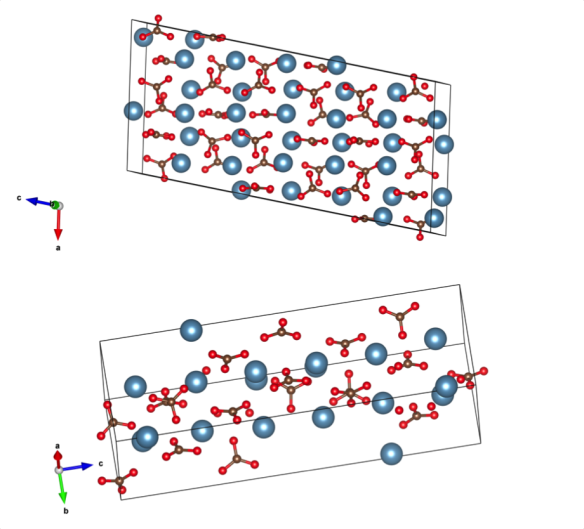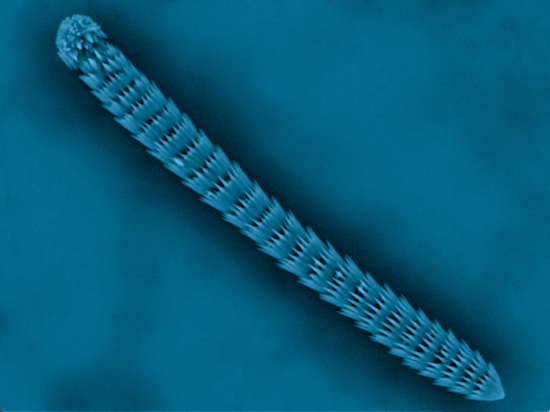It takes two – Vaterite
What does it look like?

The two structures of vaterite – from work by Demichelis et al., http://pubs.acs.org/doi/abs/10.1021/cg4002972
What is it?
Vaterite is a polymorph of Calcium Carbonate, CaCO3. It's less stable than the other polymorphs calcite and aragonite. However, the fact that it is less stable means vaterite is more soluble in water, and when exposed to water transforms into calcite, making it a great starting material for biomineralization and as an ingredient for cement. Though, in some cases small organic molecules as impurities can stabilise the vaterite structure – so that it can make up features such as the spikes on this sea squirt here.

Just 10 micrometers in diameter, this sea squirt helped unlock the crystal structure of vaterite. Photo: Pupa U. P. A. Gilbert, Lee Kabalah-Amitai, Boaz Pokroy.
Where did the structure come from?
This is where the story gets a little complicated. In fact, review papers have been written simply on the vaterite structure – it's a problem that's been debated for nearly 100 years. The debate is that the diffraction pattern doesn't really fit the simple hexagonal structure many thought it was. For years it's been debated where the differences in the observations could be coming from.
Recently two papers were published almost simultaneously, one in April 2013 and the other in May 2013, showing that vaterite was not actually one crystal structure – but two which form together. The first of these papers came to this discovery from studying the spikes of sea squirts with electron diffraction, and the other came to that conclusion theoretically. We've plotted out the two structures from the theoretical determination, mainly because their structures are in the American Mineralogist Crystal Structure Database.
It goes to show that science can be like buses – you wait for ages for a structure then two are worked out at once!






